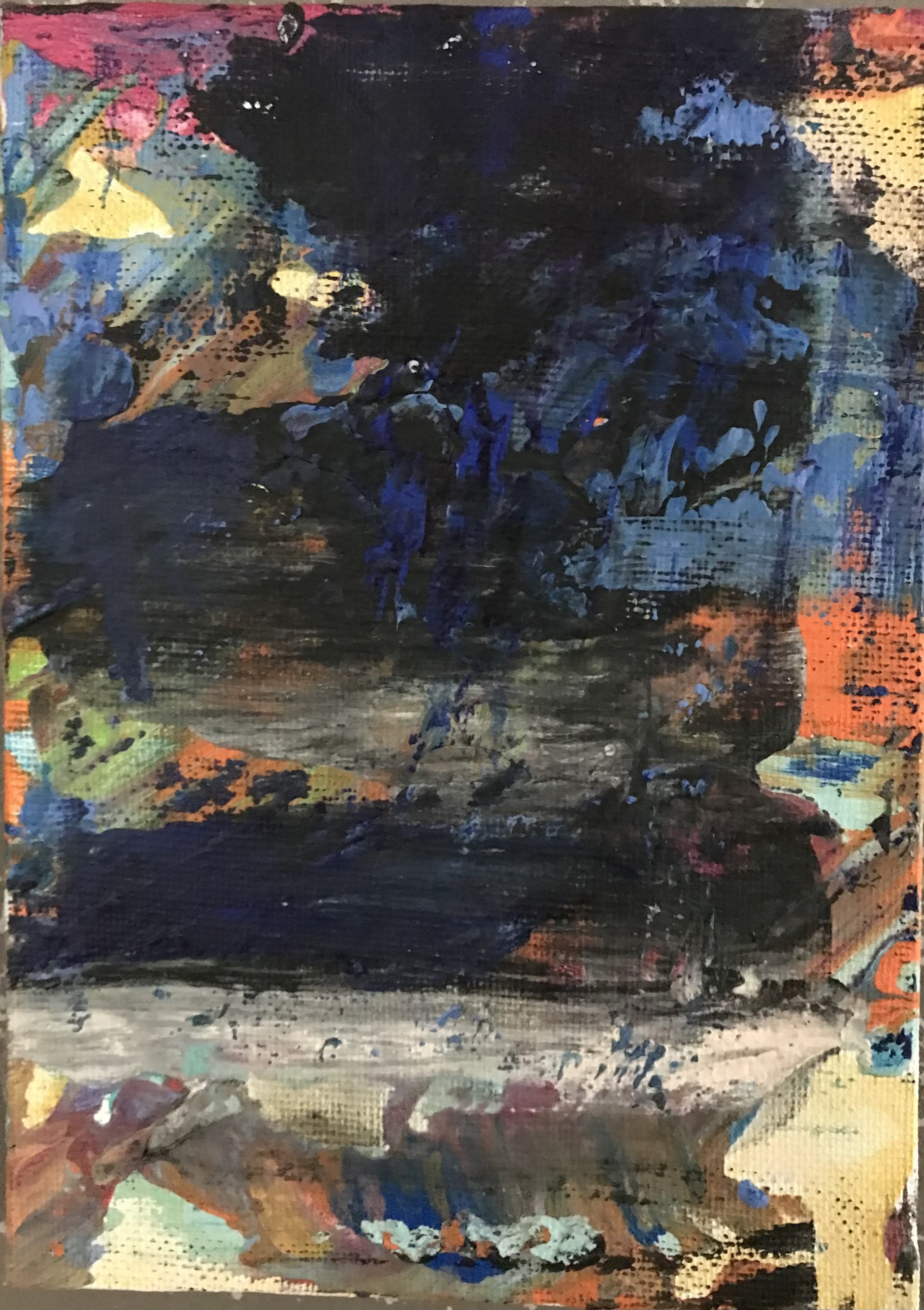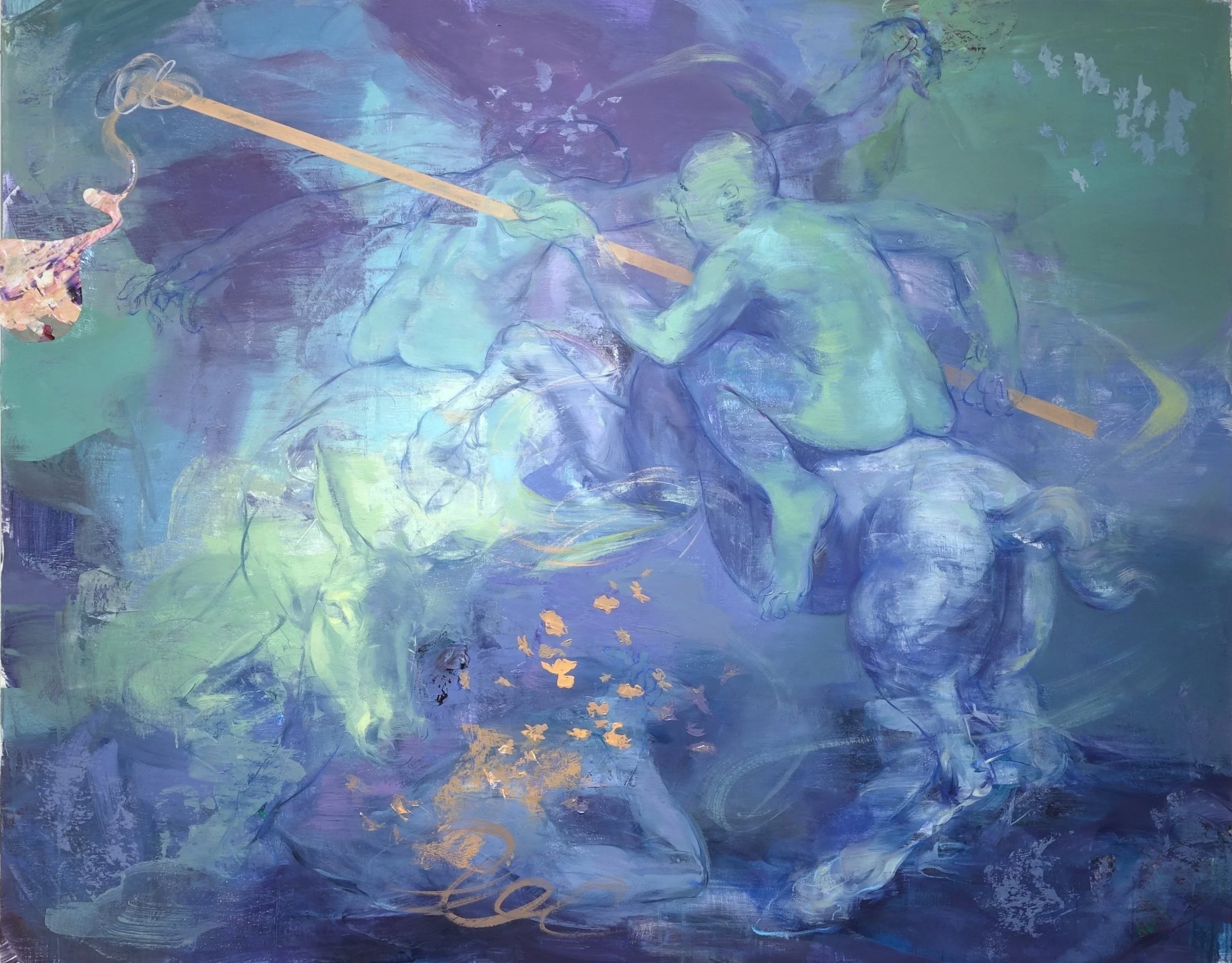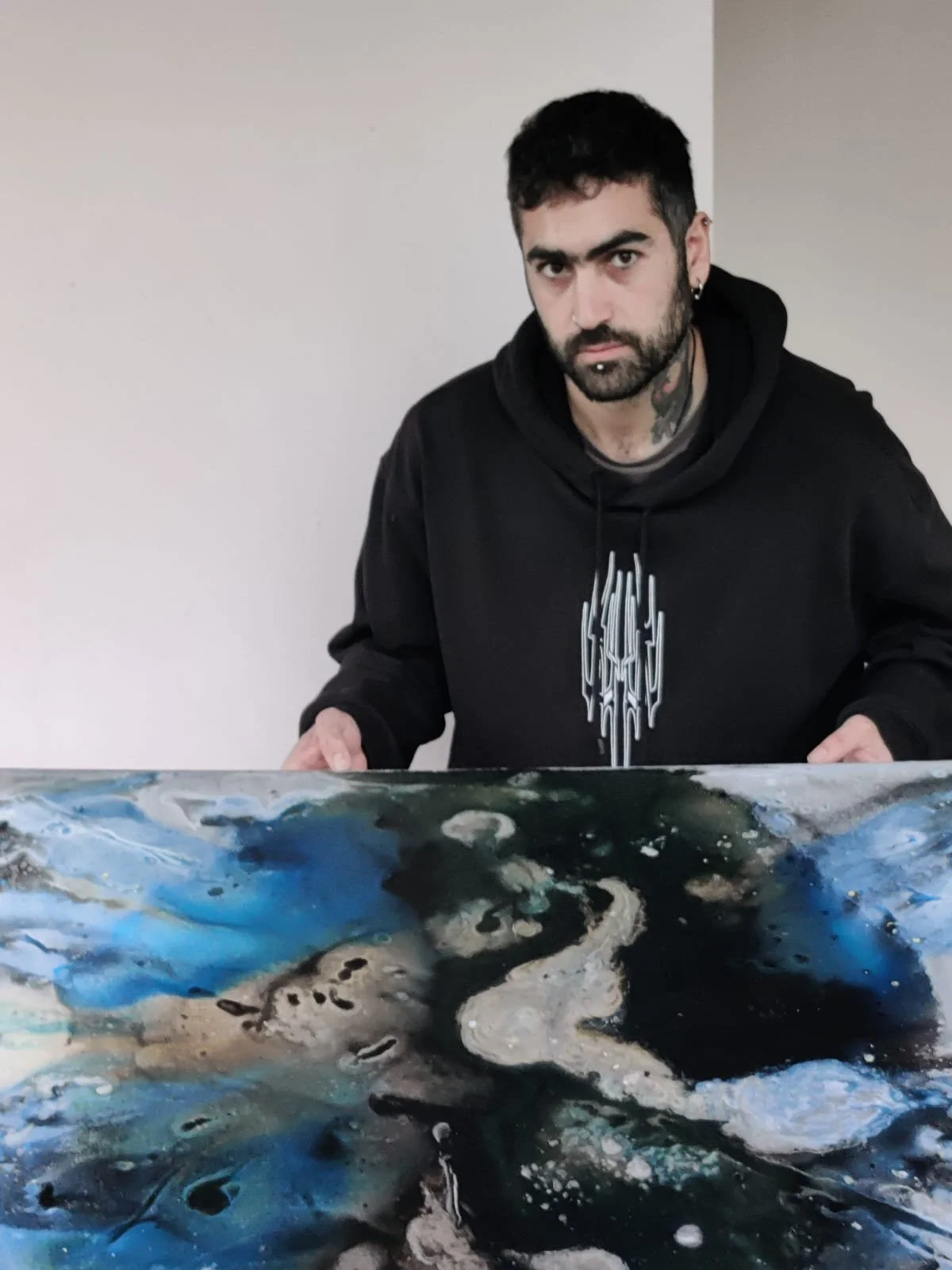10 Questions with Jason Fairchild
Al-Tiba9 Art Magazine ISSUE18 | Featured Artist
Jason Fairchild is an international fine artist based in the USA, known for his dynamic large-scale abstract paintings. His work bursts with bold colours and expressive brushstrokes, creating immersive compositions that evoke movement, energy, and emotion. Drawing inspiration from the raw spontaneity of abstract expressionism, Fairchild uses sweeping gestures and layered textures to bring his canvases to life. His pieces reflect a deep exploration of colour theory and form, often blurring the line between chaos and harmony. Fairchild's work has been exhibited in galleries across the U.S. and internationally, gaining recognition for its vibrant intensity and emotional depth. His paintings have been featured in various art publications and collections, attracting collectors and art enthusiasts alike. Currently, Fairchild continues to push the boundaries of abstraction, experimenting with new techniques and scales to further amplify the visual impact of his work.
Jason Fairchild - Portrait
ARTIST STATEMENT
Jason Fairchild's work is a dynamic exploration of colour, texture, and form, reflecting the ever-evolving nature of human experience. Through abstraction, he seeks to capture emotions, memories, and the subtle interplay between chaos and harmony. Each piece is a visual dialogue, inviting the viewer to find their own meaning within the layers of movement and expression. Inspired by diverse cultural influences and personal experiences, his creative process is intuitive, allowing spontaneity to shape the outcome. He embraces the unpredictable, using colour and composition to evoke a sense of depth, energy, and transformation. His work is not just about what is seen, but what is felt—a bridge between the tangible and the intangible. For the artist, art is a universal language, and his goal is to create work that resonates across borders, sparking connection and introspection.
Turbulent Serenity, Oil on Canvas, 48 x 60 in, 2024 © Jason Fairchild
AL-TIBA9 ART MAGAZINE ISSUE18
INTERVIEW
What initially sparked your interest in art? And how did you develop into the artist you are today?
I've always been drawn to the act of making something that didn't exist before — something that speaks beyond language. Early on, I immersed myself in the great masters, studying how they broke ground in their own time. But from the beginning, I knew I didn't want to mimic or recycle. My goal has always been to honour the depth of what's come before me but to carve out space for what has not yet been done. My development as an artist has been a relentless pursuit of finding that balance — respecting the legacy of art history while refusing to be trapped by it. Every painting under my name, under the Jason Fairchild umbrella, is a conscious attempt to add to that lineage without repetition.
You've been recognized in various art publications and collections. How has that exposure impacted your career and creative direction?
Exposure brings visibility, which is humbling, but it also brings responsibility. The more my work is seen, the more intentional I have to be about staying true to my purpose. I don't want to be seen as part of a trend or an echo of something familiar. Instead, I aim for my work to stand as a continuation of the great dialogue of art history — but filtered through my own lens, my own energy. The recognition is fuel, but the compass remains pointed toward innovation and authenticity.
Gilded Shadows, Acrylic on canvas, 48x60 in © Jason Fairchild
Speaking of your creative practice, can you walk us through a day in your studio? Where do you get inspiration from? Do you have any particular routine when working?
My studio practice is both disciplined and chaotic. I don't follow rigid routines because that can lead to formulaic outcomes, and I want to avoid anything that feels rote or recycled. Inspiration comes from the constant tension between past and present — I might study old masters in the morning, but by the afternoon, I'm actively pushing against their boundaries, asking: What haven't we seen yet? I work in layers — physically and conceptually — allowing accidents to happen but always steering toward something that feels unprecedented. There's ritual, yes, but not repetition.
Your work balances chaos and harmony. How do you navigate that tension in your creative process?
That tension is where all vitality exists. Chaos without structure collapses; structure without chaos becomes dull. In my work, I think of this as a dialogue with tradition — I lay down marks and gestures that honour composition and technique, but then I disrupt them, question them, and rebuild. It's never about destroying what came before, but rather challenging it to evolve. I want each piece to feel alive — a dance between reverence and rebellion, with both voices audible.
Fragments of a Distant Fire, Acrylic on canvas, 18x24 in © Jason Fairchild
City Lights, Forgotten Nights, Acrylic on Canvas, 18x24 in, 2004 © Jason Fairchild
Your paintings are known for their bold colours and expressive brushstrokes. What draws you to such a dynamic and energetic approach to abstraction?
Boldness is honesty. Colour, texture, and movement are all tools for capturing something primal and immediate. But I'm also very conscious that boldness alone isn't enough — it has to be intentional, part of a larger conversation. My strokes and my colour choices are always in service of creating something that pushes the language of abstraction forward. I've studied the gestural masters, but I want to go beyond homage. Under the Jason Fairchild umbrella, it's about using those tools to open new territory, not retrace old maps.
Abstraction often allows for open interpretation. Do you see your work as a personal expression, or do you hope viewers create their own meanings within it?
It's personal but not private. My work starts with my own questions and instincts, but I release them into the world with the hope that others will find their own narrative within it. I want viewers to feel the echo of art history in the work — but also the defiance of it. I hope they sense that what they're looking at is both part of a continuum and something entirely new.
On that note, what do you hope viewers take away from your work? Is there a particular emotion or experience you aim to evoke?
I want viewers to feel like they're standing on the edge of something familiar but also something they've never seen before. I hope they feel excitement, curiosity, maybe even discomfort — that stirring that comes from sensing you're witnessing the future being built from the bones of the past. I want them to walk away with more questions than answers and a deeper appreciation for what art can be when it's not content to repeat.
Whispers in Metal and Sky, acrylic on canvas, 48x60 in © Jason Fairchild
Crimson Faultlines, Acrylic on canvas, 42x50 in © Jason Fairchild
You embrace spontaneity and unpredictability in your work. How do you know when a painting is finished?
A piece is finished when it feels inevitable. When all the elements — chance, deliberation, history, and intuition — settle into something that couldn't be anything else. There's a delicate balance between overworking and under-developing. I know I'm done when the painting feels like it could stand in a room next to the giants of art history and still offer something new.
Your pieces have been exhibited internationally. How has showing your work in different cultural contexts influenced your perspective as an artist?
It's a powerful reminder that the language of abstraction is universal, but interpretation is beautifully diverse. Exhibiting internationally has sharpened my focus on creating work that transcends geographic and cultural boundaries. It reinforces my mission: to do work that honours the global, historical conversation of art while unmistakably contributing something that could only come from my own vision.
With a constantly evolving practice, are you currently experimenting with any new techniques or materials?
Always. Stagnation is the enemy of innovation. Lately, I'm exploring ways to incorporate unexpected materials — not just for novelty, but to challenge my own process. I'm also pushing scale and dimensionality, exploring how painting can inhabit space differently. Everything I experiment with is part of that same pursuit: honouring what came before, while relentlessly asking, What's next under the Jason Fairchild name?
























